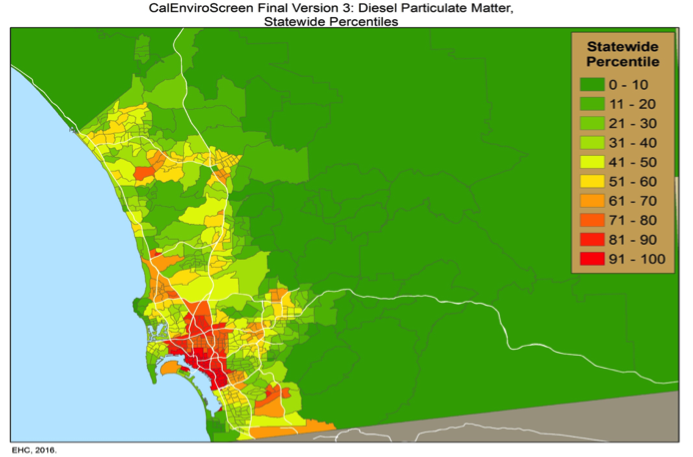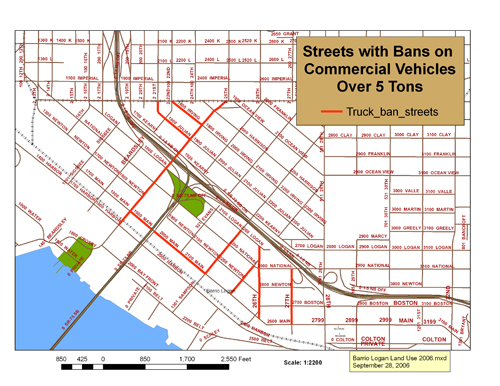- Quienes Somos
- Nuestro Trabajo
- En Donde Trabajamos
- Media Center
- Giving
- Contacto
For many years, residents in the community of Barrio Logan complained about the increasing heavy-duty diesel truck traffic on their neighborhood streets. Diesel emissions from these trucks, as well as safety, noise, and other impacts concerned citizens.Based on the California environmental justice mapping tool CalEnviroScreen, we can see that Barrio Logan is in the highest vulnerability for particulate matter from Diesel pollution.

Barrio Logan Monitoring Project
In order to combat this air pollution and its impact on health, EHC is measuring outside air pollution throughout the Barrio Logan community and will soon start to the use filters to reduce air pollution inside homes. The purpose of this project is to:
- Measure the effectiveness of air filters (IQAir Health Pro Plus) in improving indoor air quality
- Measure how these filters help improve the health of people with respiratory illnesses
- Create a scientific representation of the air quality in the environment of Barrio Logan with outdoor air monitors (Purple Air Monitors)
We invite community members to take part in this project by offering their home as a location for an outside air monitor, participating in the indoor air quality study or joining our monitoring events where we take air quality readings throughout the neighborhood in groups. If you are interested in participating in any of these activities, contact us here.
Past EHC Air Pollution Victories
In 1999, EHC began working with residents to document the problems associated with the trucks, by counting the trucks using Cesar Chavez Parkway, measuring emission levels with hand-held particle counters, and documenting parking and idling problems. EHC’s Community Action Team began to focus on the problems with parking and idling trucks in 2003, and secured the support of their councilmember, and the Barrio Logan Environmental Justice Demonstration Project. They subsequently won truck parking prohibitions in February 2004.
By that time, CalTrans had awarded a grant to the City of San Diego and EHC to embark upon the initial stages of a community-based planning process that included a truck study to address the problems with truck routing. Working with the San Diego Unified Port District, that study was completed in 2005 and recommended re-routing of the trucks to access I-5 via 32nd Street/I-15, rather than Cesar Chavez Parkway. Subsequent community organizing and pressure, as well as support from City staff, the Port District, and local industries, combined to convince the city council to ban truck traffic on Cesar Chavez Parkway on April 4, 2005.

No hay artículos en esta categoría. Si se muestran las subcategorías en esta página, puede que tengan artículos.

